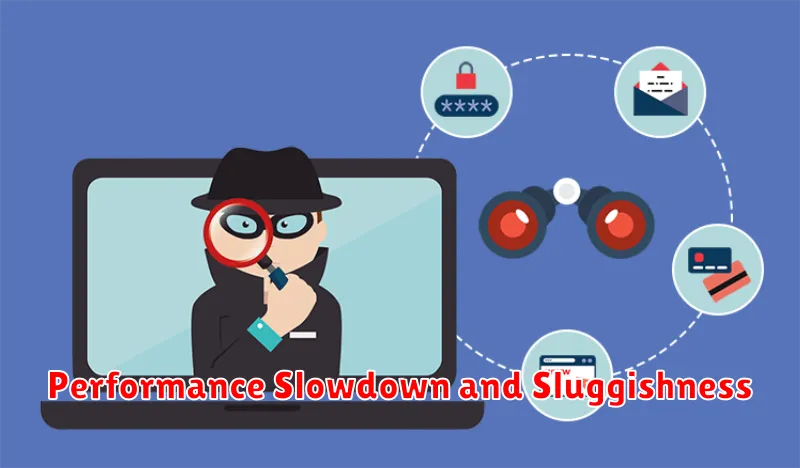Are you concerned about spyware infiltrating your phone? Do you worry about unauthorized access to your personal information, tracking of your location, or interception of your communications? In today’s digital landscape, spyware poses a significant threat to mobile device security. Learning to recognize the tell-tale signs of a spyware infection is crucial for protecting your privacy and data. This article will provide you with the knowledge and tools necessary to identify and address potential spyware threats, helping you keep your phone safe and secure.
From unusual battery drain and data usage spikes to unexplained app crashes and suspicious background activity, the presence of spyware can manifest in various ways. Understanding these signs can empower you to take proactive steps to remove spyware and prevent future infections. This guide will delve into the common indicators of spyware, offering clear explanations and practical advice on how to safeguard your phone against this insidious form of malware. Learn how to protect your phone from spyware and regain control of your mobile security.
Sudden Increase in Data Usage
A significant and unexplained surge in your mobile data consumption can be a strong indicator of spyware. Spyware applications often transmit collected data in the background, consuming your data allowance without your knowledge. Monitor your data usage regularly. Most smartphones offer built-in tools or apps for this purpose. If you notice a considerable jump in data usage that you can’t attribute to your typical activities, it warrants further investigation.
To discern if spyware is the culprit, carefully analyze your app usage. Determine which apps are consuming the most data. If an unfamiliar app, or one you rarely use, is responsible for the increased data usage, it could be a sign of spyware. Comparing your current data usage with your historical data can also help highlight unusual spikes. Establishing a baseline for your regular data consumption allows you to readily identify significant deviations.
Unexplained Battery Drain
A significant and sudden decrease in your phone’s battery life can be a red flag. While battery performance naturally degrades over time, spyware running in the background can dramatically accelerate this process. These malicious programs constantly consume power, even when your phone appears idle.
Monitor your battery usage. Most smartphones offer detailed breakdowns of battery consumption by apps. If you notice an unknown app, or a familiar app using significantly more power than usual, it warrants further investigation.
Consider recent app installations. Think back to when the battery drain started. Did you install any new apps around that time? If so, they might be the culprit.
Strange App Behavior
Spyware can manifest through unusual app behavior. Unexpected crashes, unresponsiveness, or apps taking significantly longer to load than usual can be red flags. Also, be wary of apps suddenly appearing on your device that you don’t recall installing.
Furthermore, pay close attention to apps requesting permissions they shouldn’t need. For example, a flashlight app requesting access to your contacts or microphone should raise suspicion. Spyware often disguises itself within seemingly harmless apps to gain access to sensitive data.
Modifications to app settings you didn’t make are another potential sign. This could include changes to default apps, homepage settings, or notification preferences. If you notice such alterations, investigate further to determine the cause.
Unusual Background Noise During Calls
While some background noise is normal during phone calls, spyware can sometimes introduce unusual sounds. These might include clicking, static, echoing, or high-pitched whining noises that you haven’t heard before. These sounds can indicate that your phone’s microphone is being accessed and data is being transmitted without your knowledge.
If you consistently experience these strange noises during calls, particularly across different locations and networks, it’s important to investigate further. While not always conclusive proof of spyware, unusual call noise combined with other suspicious symptoms warrants serious consideration.
Overheating Even When Idle
A phone that consistently overheats, even when not in use, can be a sign of spyware running in the background. Spyware often consumes significant processing power, leading to increased heat generation. While occasional overheating can be normal, particularly during demanding tasks or in hot environments, persistent and unexplained overheating should raise a red flag.
Consider these points: Is your phone hot even when you haven’t used it for a while? Is it noticeably warmer than usual? If so, it might be worth investigating further for potential spyware.
Performance Slowdown and Sluggishness

One of the most noticeable signs of spyware is a significant decrease in your phone’s performance. Sluggishness, unresponsiveness, and slow loading times can all indicate that spyware is running in the background, consuming resources and bogging down your device. If your phone suddenly becomes much slower than usual, especially when performing routine tasks, it’s a crucial warning sign that warrants further investigation.
Lagging and freezing are also common indicators. Apps might take an unusually long time to open, or they might crash frequently. Scrolling through menus or webpages can become choppy and unresponsive. These performance issues can be frustrating and disrupt normal phone usage, signaling a potential spyware problem.
Unwanted Pop-ups and Ads

A sudden increase in pop-up advertisements, especially on screens where they don’t typically appear, can be a red flag. These ads might be intrusive, difficult to close, or promote suspicious products and services. Spyware can inject these ads into your browsing experience or even display them on your home screen, regardless of what apps you’re using.
Pay close attention to the content of these ads. Are they unusually suggestive or irrelevant to your interests? Do they seem too good to be true? These factors can indicate that the ads are not legitimate and may be linked to spyware attempting to collect data or trick you into clicking malicious links.
Experiencing pop-ups even when your phone is locked or idle is another significant warning sign. Legitimate apps rarely display ads under these circumstances, so this behavior strongly suggests unwanted software operating in the background.
Unexpected Text Messages or Calls
Another potential sign of spyware is the presence of unfamiliar text messages or calls on your device. These could manifest in several ways. You might receive texts containing strange links, garbled characters, or messages you didn’t send. Similarly, unexplained outgoing calls to unfamiliar numbers could indicate a compromise.
Premium service subscriptions you didn’t authorize are a serious red flag. Spyware can sometimes subscribe your phone to these services, resulting in unexpected charges on your bill. Carefully review your billing statements for any suspicious activity.
If you’re noticing these unusual communication patterns, it’s crucial to investigate further. It could be a sign that spyware is using your device to communicate with a remote server or even racking up charges on your account.
Difficulty Shutting Down or Restarting
A phone that’s resistant to shutting down or persistently restarts could be exhibiting signs of spyware. Legitimate apps rarely interfere with these core functions. Spyware, however, might need to maintain access even when you attempt to power off the device, leading to these disruptions.
If you experience unusual delays or complete failure when trying to shut down or restart your phone, consider this a serious red flag. It’s crucial to investigate further and take steps to secure your device.
Observe if the phone exhibits other unusual behavior during the shutdown/restart process, such as unexpected screens, prompts, or error messages. These anomalies could provide further clues about the presence of unwanted software.

